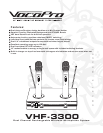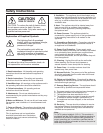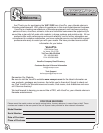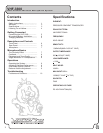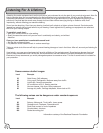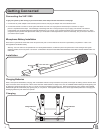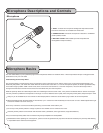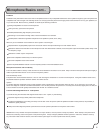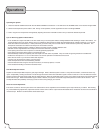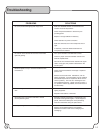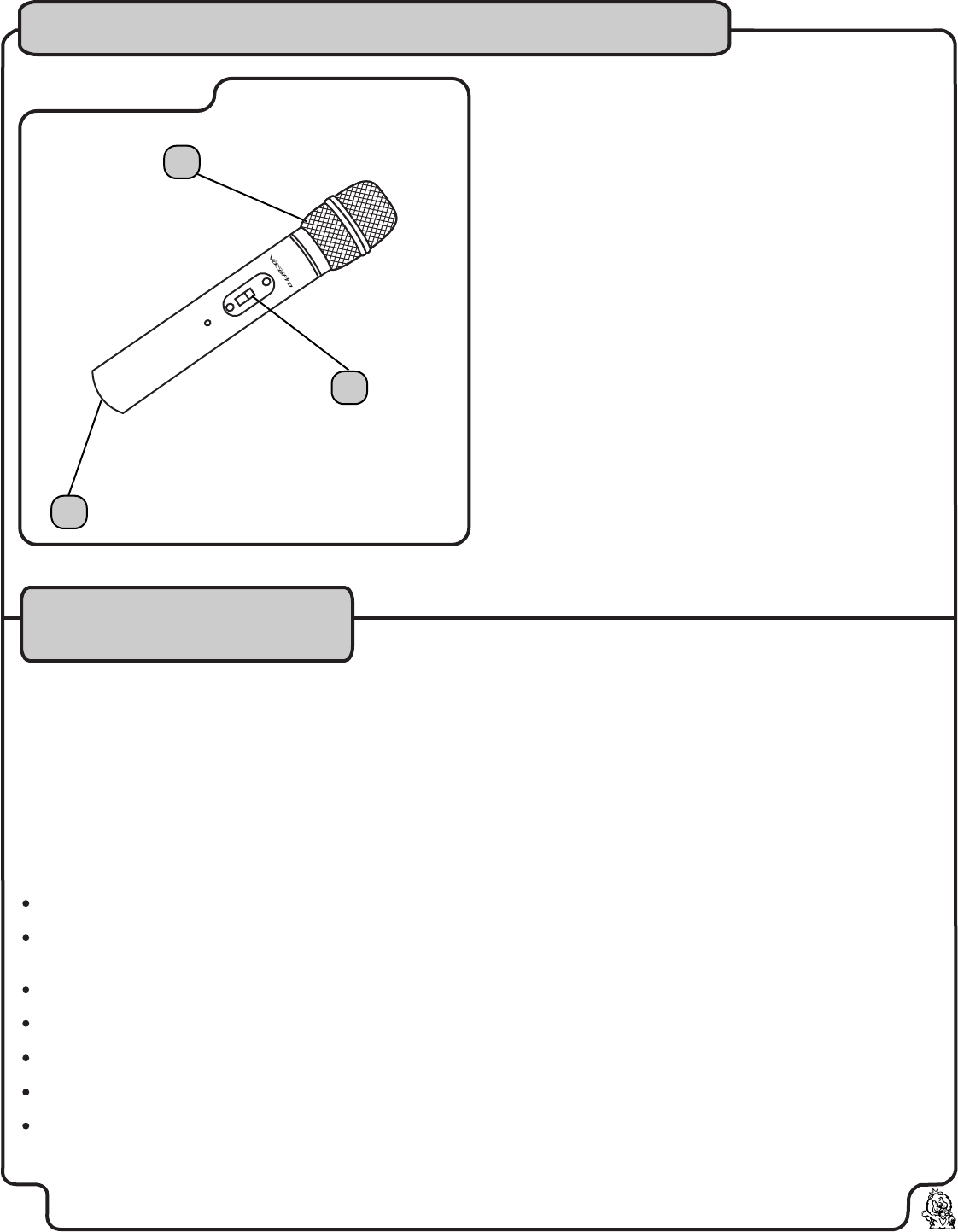
Microphone Descriptions and Controls
7
Microphone
1. GRILL: Protects the microphone cartridge and helps reduce breath
sounds and wind noise via enclosed foam windscreen.
2. POWER BUTTON: Places the microphone in ON/OFF or STANDBY
(center position) modes.
3. BATTERY COVER: Removeable cup holds and protects the
rechargeable microphone battery.
Microphone Basics
The VHF-3300's ability to pick-up extremely high and low frequencies makes it an excellent choice. We have provided a few tips to help get the best
performance out of your VHF-3300.
Understanding the Proximity Effect
The Proximity Effect is a resulting boost to the low-frequency range of sounds that occur with the close-up use of microphones designed with a uni-
directional polar pattern, such as the VHF-3300. When the sound source is less than a ¼" from the microphone capsule, the boost is generated mostly
in the 100Hz range by 6dB to 10dB. In other words, when a sound source is less than a ¼" from the microphone, the sound will be output with a
stronger and richer bass tone than if the sound source was farther away from the microphone.
While the proximity effect can intentionally be used as an advantage to enhance some voices, it may have an undesired effect on certain vocal ranges.
It is really a matter of preference and depends on the singer. To avoid a lessened sound quality when using the proximity effect, keep these tips in mind:
Always try to use available EQ or tone controls on external equipment to enhance a sound before trying to make use of Proximity Effect.
When experimenting with Proximity Effect for the first time, try it in a small room with moderately low volume and no tone or effects adjustments to get
a sense for whether it can be of use to you.
Do not try to enhance a sound source without performing a sound check at the location prior.
Do not rely on the proximity effect to "change" a persons voice. Rather use it to enhance one's voice.
Avoid the proximity effect in environments with excessive reverb, (cathedrals, school gymnasiums, large dancehalls etc).
Try to avoid the proximity effect when connected to high-output amplifiers and loudspeakers.
Remember that when speaking into a microphone, "plosive" words can generate loud pops which will also be boosted by the proximity effect leading
to a possible threat to external sound equipment.
3
2
1



